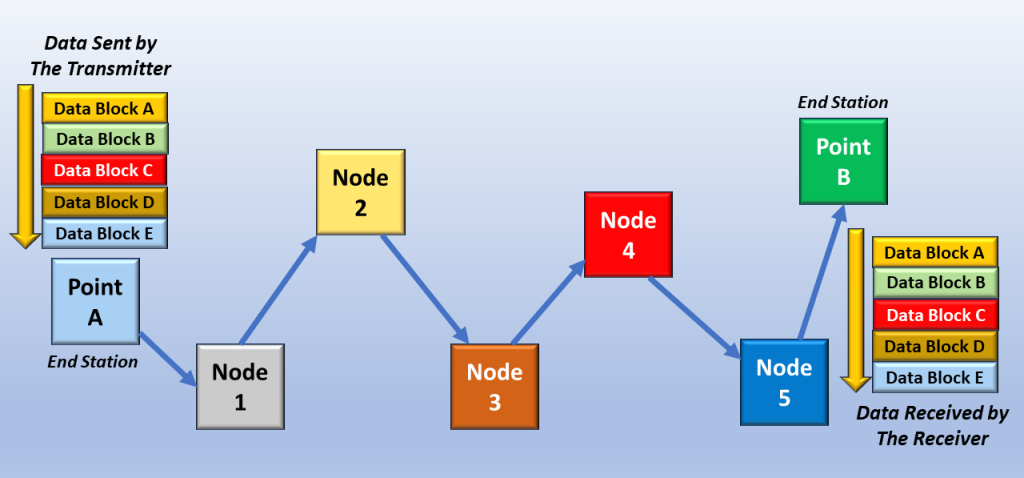In Computer Networking (and the Internet in general), all communication systems will be one of the two following types:
- Connection-Oriented Communication, and
- Connectionless Communication
In this blog post, we will talk about Connection-Oriented Communication; we will speak about Connectionless Communication in another blog post.
The Main Definition of Connection-Oriented Communication
The primary definition of Connection-Oriented Communication is that we must establish an end-to-end connection from Point A to Point B before communication can flow between Points A and B.
I show this requirement below in Figure 1.

Figure 1, An End-to-End Connection between Points A and B must be set up first.
Characteristics of Connection-Oriented Communication
- Requires a Setup Phase or Procedure (before any communication can begin).
- Data arrives (at the Destination) in the same order as it was sent (from the Source).
- All data blocks (or packets) follow the same path from the Source to the Destination.
- Once Communication has ended, the connection must be “torn down” to free up resources for other services.
- Minimal variation in propagation delays (from the Source to the Destination).
- This means the transit time through the connection is usually close to constant.
- Typically involves the use of a dedicated link or communication media
- Uses Static Bandwidth allocation as opposed to Dynamic Bandwidth allocation.
In Figure 2, I show one of the features of a Connection-Oriented Communication System. If we send Data Blocks A through E out (in that order), it will arrive at the other end in the same order (or sequence).

Figure 2, The Order/Sequence of Data, as it arrives at the Receiver, is the same as the order in which it was sent (at the Transmitter).
Hence, there is no need to re-order the sequence of data (to keep data in its proper order at the Destination).
Figure 3 shows another feature of a Connection-Oriented Communication System: the Nearly Constant Propagation Delay Times through the Network.
If it takes time, t, for a block of data to transit the network, it will typically take time, t, for all other blocks to traverse the network. There is minimal deviation in t for Connection-Oriented Networks.

Figure 3, All Data Blocks passing through a Connection-Oriented Communication System will have a Nearly Constant Propagation Delay time through the network.
This feature means that Connection-Oriented Communication is typically very good for real-time services (such as Voice or Video).
Some Disadvantages of Connection-Oriented Communication
One downside of Connection-Oriented Communication is that it does require dedicated bandwidth.
Other services are typically “locked out” and cannot use this bandwidth.
Examples of Connection-Oriented Communication
- Voice Phone Call
- You must dial your friend’s (or other party’s) number, and they MUST pick up their phone (completing the connection setup) before your conversation can begin.

Figure 4, Example of Connection-Oriented Communication – the Phone Call
Examples of Technologies/Protocols Using Connection-Oriented Communication
- ATM (Asynchronous Transfer Mode)
- SONET/SDH
- OTN (Optical Transport Networks)

